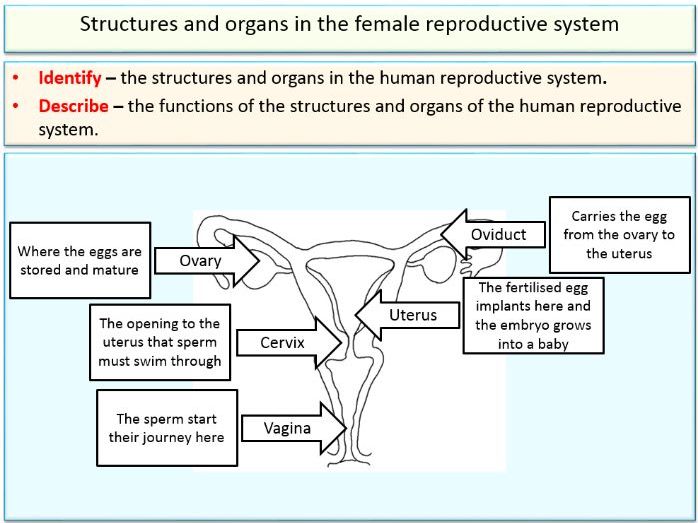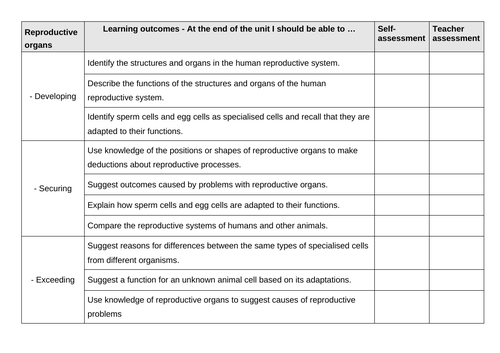








The lesson is designed to teach reproductive organs and gametes to students in KS3 and KS4 following guidance from the National Curriculum. The first activity is designed to gauge the current knowledge and understanding of the students from KS2. Some students may be able to identify the egg cell, sperm cell and name the process of fertilisation. If students have completed the lessons about cells, they may be able to identify the cells are all specialised cells found in the human body.
The objectives have been separated in to three tiers developing, securing and exceeding. The objective sheet can be used by the student and teacher to monitor the performance against each objective as a learning outcome.
The National Curriculum states that reproduction in humans (as an example of a mammal) must be taught to students and needs to include the structure and function of the male and female reproductive systems.
A worksheet has been provided and the students can be given the diagrams of the male and female anatomy and use the arrows to identify the different structures. An activity like snowballing can be used, where the students walk around the room from station to station and see whether other students have labeled the diagrams in the same way. Students can leave feedback on post it notes to help address misconceptions or simply correct the errors by moving the arrows.
The students must also be able to identify the structure and function of gametes. A low order cognitive thinking skills activity has been produced where the students identify the different parts of the male and female gametes. The higher order cognitive thinking skills activity allows the students to make links between the feature (adaptation) of the cell and its function.
Activities have been included to build scientific literacy by making the students define the keywords and use them in sentences.
A video has been embedded which describes the process of fertilisation and the questions can be used alongside the clip to maintain focus on the key points. After the clip the activity ‘define the keywords’ could be used to summarise the process of ejaculation to implantation of the fertilised egg.
The higher order thinking skills (exceeding objectives) include causes of reproduction problems, reasons between different specialised cells from different organsims and suggesting functions of specialised cells based on their appearance and adaptations.
The activity adapations of animal cells links well to this unit and the students should predict the function based on special features. It also gives the opportunity to recap knowledge from the cells topic. The process of re-visiting the work from a previous unit helps the students to recall more facts over time as seen by the research by Ebbinghaus learning curve.
The following lesson will detail the process of fertilisation and becoming pregnant and include the effect of maternal lifestyle on the foetus through the placenta.
Something went wrong, please try again later.
This resource hasn't been reviewed yet
To ensure quality for our reviews, only customers who have purchased this resource can review it
Report this resourceto let us know if it violates our terms and conditions.
Our customer service team will review your report and will be in touch.